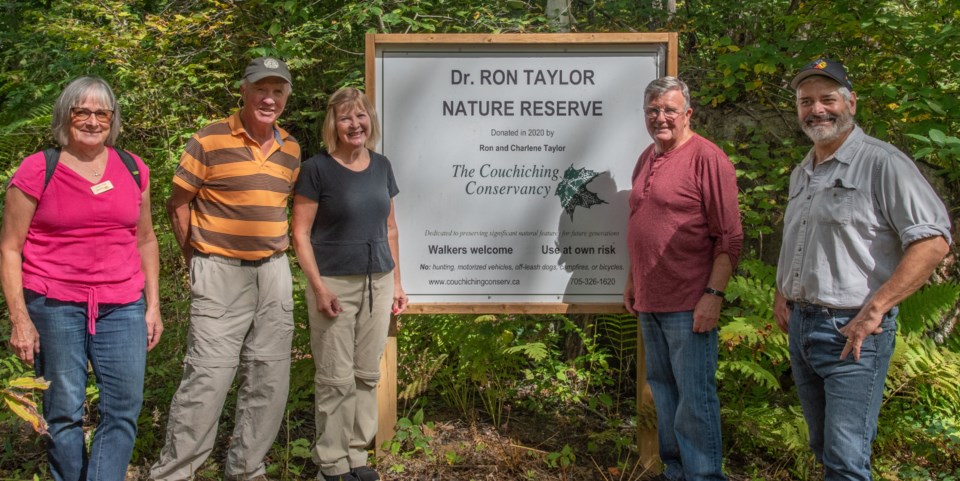The Couchiching Conservancy hosted a small gathering this week to celebrate the unveiling of the Dr. Ron Taylor Nature Reserve.
This 175-acre property was originally protected in July of 2020, with an 80% donation by the Taylors.
The community can join in the celebration of this Nature Reserve by visiting the Conservancy’s YouTube channel on World Habitat Day on Monday, Oct. 4 at 7 p.m., for a recording of the in-person unveiling that includes a virtual tour of this parcel of land about 14 kilometres east of Washago.
The property was owned by Dr. Ron Taylor and Charlene Taylor.
Located between the Adams Nature Reserve (5 km to west, protected in 2016) and Ron Reid Nature Reserve (6 km to east, protected in 2017), the property has a direct connection to the Queen Elizabeth II Wildlands Provincial Park. It is Anishinabewaki, Huron-Wendat, Mississauga and Haudenosaunee territory.
This project was undertaken with an 80 per cent donation by the Taylors plus financial support from the Echo Foundation, McLean Foundation, Consecon Foundation, Ganawenim Meshkiki (Eastern Georgian Bay Initiative), Dr. Nancy Ironside and other donors.
“Environmental protection became more central to our thinking and we wanted to consciously protect this property as green space and rescue it from future building development,” said Ron and Charlene.
The landscape is a mixture of open rockland with Red Oak, White Pine and Sumac, beaver ponds, and swamp with Red Maple, Tamarack Trees and Spruce.
This landscape is a prime area for Blanding’s Turtles (threatened), Eastern Wood Pewee (special concern), Five-lined Skink (special concern), Eastern Whip-poor-will (threatened) and many others.
Connecting these protected landscapes is beneficial to large-range species as well, such as moose, black bear and white-tailed deer.
"It has served as our refuge from the bricks, mortar and pavement of modern life. It has been a place to explore and introduce the next generation to the beauty and quietness of nature. A trip to the property always cleansed the mind from chaos as we found nature always the best antidote for the stress of busy professional lives,” said Ron and Charlene.
With support from the community, the Conservancy now helps to protect over 13,500 acres of wilderness. Many of these Reserves have footpaths and trails.
